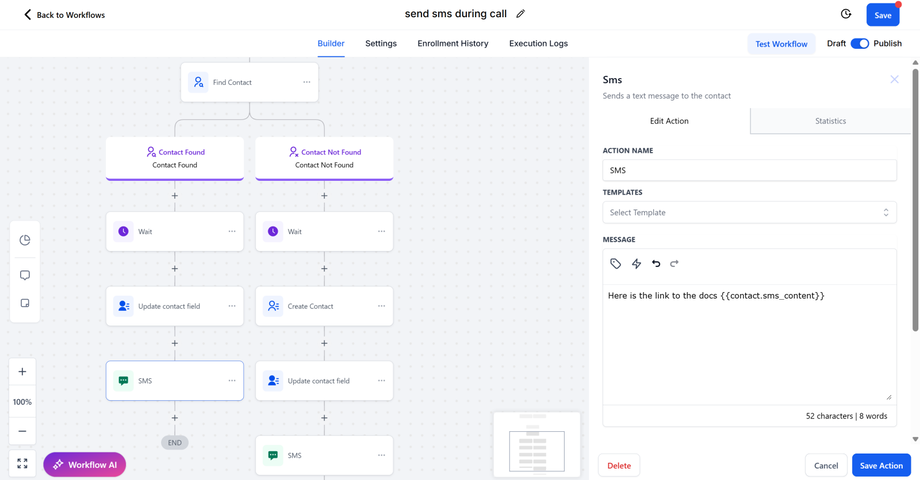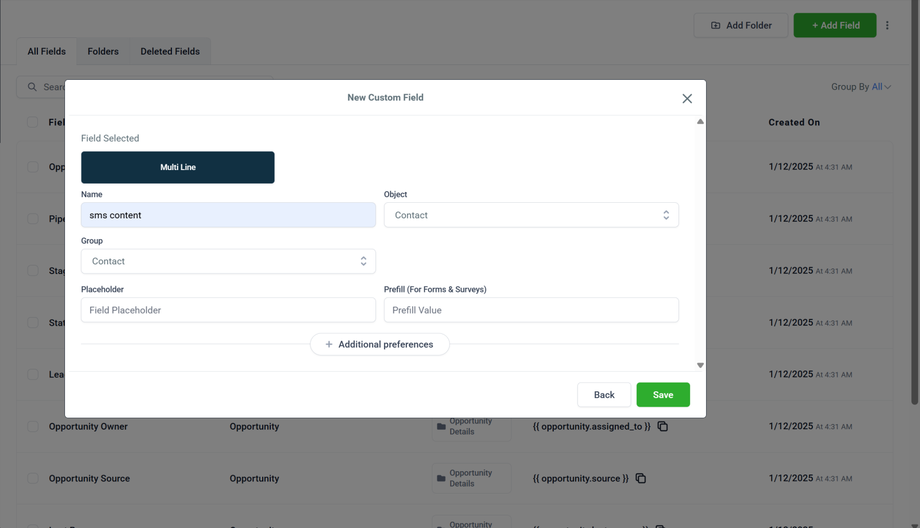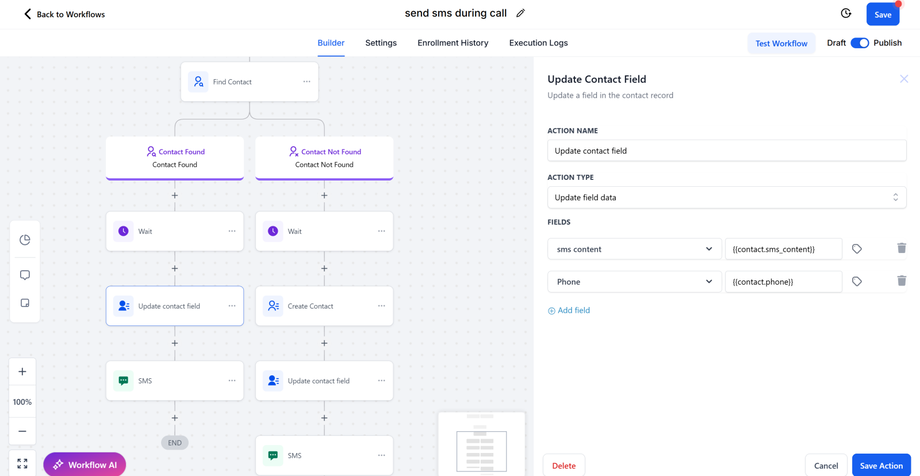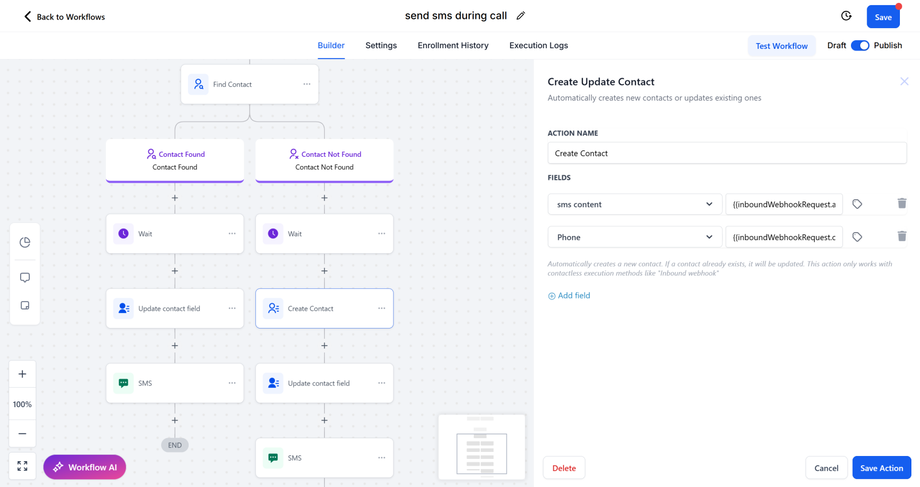How to Send Links VIA Text Messages During Phone Calls
Objective: To create and automate a custom tool in the AI Assistant that sends links during calls when requested.
Step 1: Create the Custom Tool
-
Navigate to AI Assistant Settings.
-
Click on Tools and Abilities.
-
Select Create Custom Tool and enter the following details:
-
Unique Name: sms_content
-
Description: This tool should be triggered whenever a user requests to receive links, resources, or any other information via SMS during an active conversation. It ensures that the requested information is instantly sent to the user’s phone, providing a seamless experience. This tool is designed to handle any requests for links or details that need to be delivered quickly during a call, enhancing customer satisfaction and ensuring timely follow-ups.
-
Trigger: Activated when the user asks for a link or information to be sent via SMS.
-
-
Click Save. (The Endpoint URL will be added later.)
- Add a prompt and and give the link to the AI Prompt to call the tool and send the required information.
Step 2: Set Up the Automation Workflow
-
Go to Automations and click Create New Workflow.
-
Name the workflow: Custom Tool - Send SMS During Call.
-
Add a Trigger:
-
Select Inbound Webhook as the trigger type.
-
Copy the Webhook URL provided.
-
-
Go back to the custom tool and paste this Webhook URL into the Endpoint URL field.
-
Define the following parameter in the Custom tool:
-
Parameter Name: sms_content
-
Description: The text message or link(s) that need to be sent to the user via SMS. This includes any resources, links, or information the user has requested during the conversation.
-
Step 3: Create a Custom Field (Optional Logging)
-
Navigate to Custom Fields.
-
Create a new field with the following details:
Step 4: Link the Automation to SMS Sending Action- Guide to the workflow
-
🔹 Step 1: Trigger
-
Trigger Type: Inbound Webhook
-
This webhook initiates the workflow when called from your custom tool.
- Get the payload reference by making a test call.
🔹 Step 2: Add a Wait Action
-
Action: Wait
-
Duration: 0.3 minutes
-
Purpose: Allows any asynchronous processes to complete before proceeding.
🔹 Step 3: Find Existing Contact
-
Action: Find Contact
-
Search Fields: Use
Contact IDandPhonefrom the webhook payload and map them to Inbound webhook trigger - Call - Call id, - and map the same fields for phone- Inbound webhook trigger - Call - From_number

🔹 Step 4: Conditional Branch – Contact Found?
- If Contact Is Found
-
Add Wait for 0.2 minutes.
-
Action: Update Contact Fields
- Map the fields
sms_content - map to sms content from custom values
map (phone - contact - phone)
- If Contact Is Not Found
-
Add Wait for 0.2 minutes.
-
Action: Create New Contact
-
Map the fields
sms_content - map to sms from custom values
map this field (phone - contact - phone)
-
-
Action: Update Contact Fields
-
Ensure all fields are complete.
-
- Next Update Contact Field
🔹 Step 5: Send SMS
-
Action: Send SMS
-
Message:
Here is the link to the docs, and add the tags sms content(You can use dynamic fields from the webhook to include links or additional details.)

🔹 Optional Actions (Optional Enhancements)
-
Send Email with the same documentation link.
-
Send Internal Notification for tracking or team visibility.
🔧 Optimization Tips
-
Combine the Update Contact and SMS actions after branching to avoid duplicates.
-
Consolidate optional actions (email/notifications) after contact creation or update.
-
Step 5: Final Testing and Deployment
-
Initiate a test call and simulate a user request like: "Can you text me the link?"
-
Ensure the tool:
-
Detects the request.
-
Send the SMS correctly.
-
Logs the action (if applicable).
-
-
Verify the SMS was received and content is accurate.
Result: The AI Assistant can now respond in real-time to SMS requests during calls, sending links or information via text and optionally logging the interaction for future reference.





